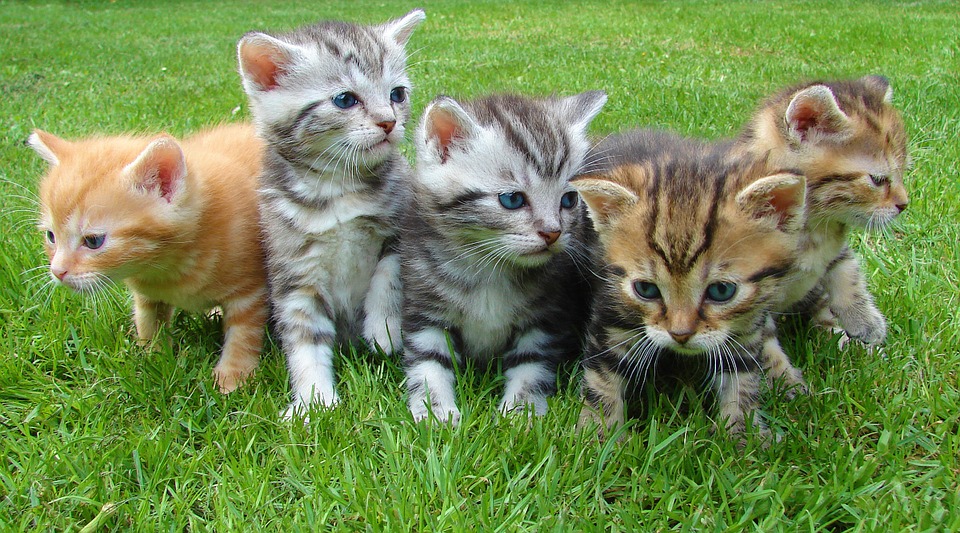by Cailin R. Heinze, VMD, MS, DACVN
We’ve discussed grain-free diets in a previous post, focusing on the fact that “grain-free” is a marketing term rather than a health term. There are no data that show that these diets have any health benefits for dogs and cats over more traditional diets. It’s not just health benefits where the data are lacking, however. Despite the popularity of grain-free diets, there really hasn’t been any good information available on even the basics such as how do the nutrient levels and ingredients (other than grains) compare to more traditional grain-containing diets?
That is, until recently. We just published a study in the Journal of Feline Medicine and Surgery that compared ingredients and some nutrients – calories and carbohydrates – between a number of popular grain-free and grain-containing dry diets for cats.
We collected ingredient and basic nutrient information on 77 dry cat diets, 42 diets that contained grain and 35 diets that were grain-free that we found for sale by large online retailers. We then determined which ingredients were most common in each category and compared nutrients between the two categories. Here are some of the more interesting things we found:
- One of the diets advertised as “grain-free” actually contained a grain! Barley was listed on the ingredient list.
- The calories were similar in both types of diets – so feeding one versus the other would not necessarily mean feeding more or less calories, although the calories in diets in both categories varied widely.
- The average grain-free diet had lower amounts of carbohydrates than the average diet that contained grains, but there were grain-free diets with similar or even higher amounts of carbohydrates as diets with grains.
- The most common animal-sourced ingredients in both grain-free and grain-containing diets were poultry (chicken, turkey, and/or duck), egg, and fish.
- The most common plant-sourced ingredients in grain-free diets were peas, cranberries, potato and carrot. The most common plant-sourced ingredients in grain-containing diets were rice, flax, cranberries, and oats.
- Some of the diets contained some rather unusual ingredients for a cat food – lettuce, watercress, celery, blackberry, avocado, apricot, artichoke, chia, papaya and zucchini.
- Exotic meats – venison, bison, rabbit – were most common in grain-free diets.
What can we learn from this study?
These results show us that just because you are using a grain-free diet doesn’t mean that you are feeding your cat less carbohydrate. It also doesn’t predict whether the food will be high or low in calories. All dry cat diets contain carbohydrates of some kind. The grain-free cat diets we investigated swapped grains for peas, potatoes, sweet potatoes, and tapioca (think of the pudding!). These ingredients are no more “natural” or healthy for your cat than grains.
Some pet food companies and other sources have suggested that grain-free diets are good options for cats with allergies. Overall, food allergies are much less common than many pet owners believe and when they do occur they are usually caused by animal-sourced ingredients such as chicken, milk, fish, and eggs. Overall, these ingredients were commonly found in both grain-free and grain-containing diets – switching to a grain-free diet would be unlikely to eliminate these common allergens.
It was interesting to see how many of the dry cat diets in both categories contained cranberries (38/77 or 49%). Many companies advertise that cranberries may be good for the urinary tract, but there are no studies showing a benefit in cats and only a little data in dogs. Even in dogs, the benefits seem to be related only to potentially reducing urinary tract infections with one type of bacteria and only with a very specific concentrated supplement product. These type of infections are pretty rare in cats and the amount of cranberries found in cat diets typically *very* small. Therefore, the cranberries serve more to make you feel good than to actually help your cat – a classic example of marketing rather than science.
Likewise, ingredients like lettuce, watercress, blackberries, avocado and artichokes aren’t making your cat any healthier, but they may be making the food more expensive than it needs to be.
Definitely some food for thought!
Happy Feeding!
Cailin Heinze, VMD, MS, DACVN

